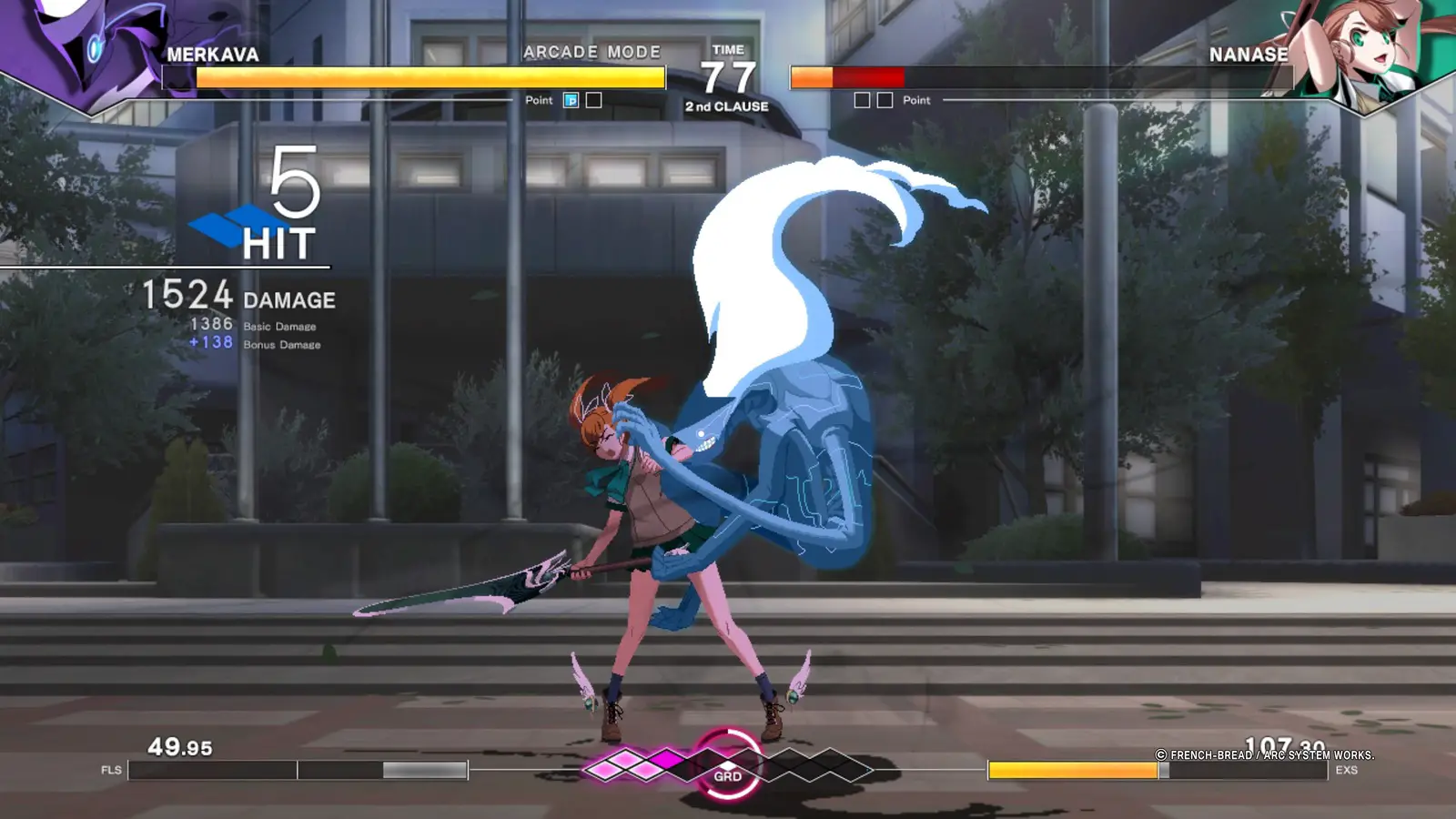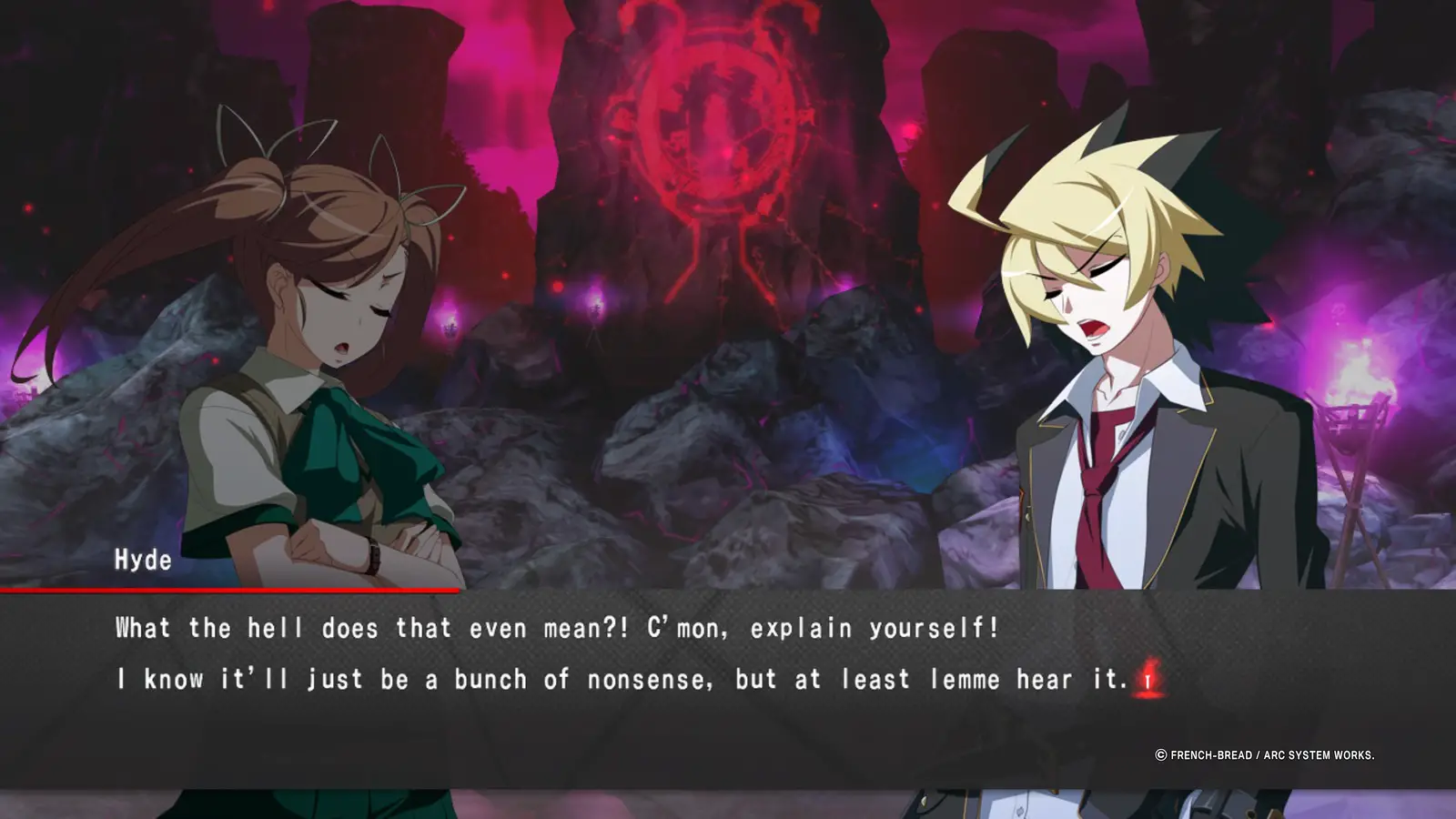![Under Night In-Birth II [Sys:Celes] review — Refined effortlessness](/content/images/size/w1200/2025/02/img_1048_1600x900.webp)
Fighting games often struggle with things that are fundamental to justifying their existence. They need to balance simplicity to gain new players while adding complexities to keep the hardcore audience invested. Sequels and revisions need to change things up, yet not so much that it alienates fans of the last iteration who dumped so much of their time into learning the game. Under Night In-Birth consistently makes it all look easy. It effortlessly clears the hurdles this genre faces with a strong core design that’s both intuitive yet satisfying to explore. That core has received multiple revisions since, and while Under Night In-Birth II [Sys:Celes] represents the most major one, it does not dramatically depart from any series conventions. Instead, Under Night In-Birth II simply refines this series’ trademark effortlessness into its most powerful form yet.
From the moment you begin hitting buttons, UNI’s fighting system just makes sense. It features a relatively free-flowing combo system where a large chunk of moves can easily flow into each other, creating an environment where most players will be able to easily figure out combos that work for them, even if they’re not the most optimal. The power of simply hitting buttons often goes understated. It’s great when it feels good and even better when it helps people intuitively understand the game. An open combo system like this encourages even novices to experiment with each character’s tools.
This sequel expands most everyone’s moveset with new abilities. You’d think this would complicate their playstyles, but I largely found these additions clarify more than they muddle. Some characters have been given tools to help them cover areas they struggle in, but the majority double down on what they were already good at. For example, Merkava has always been my favorite character in these games – he’s a big monster that specializes in erratic movement. He can cover the screen quickly with both his stretchy limbs and his ability to fly in the air. UNI2 gives him a new ground pound that, when charged, will immediately shoot him up into the air, giving you an air combo on hit or a chance for aerial shenanigans when blocked.
UNI2 similarly doubles down on the strengths of its core systems. It adds two new mechanics in the form of a “Celestial” state and the “Creeping Edge.” Both of these mechanics have big implications on the pacing of a match in UNI2, which largely gets dictated by the GRD system in place.
GRD is the heart and soul of UNI. A GRD gauge sits at the bottom of the screen and it acts as a simplified visual representation of the match. The meter fills by playing the game in an advantageous way – everything from landing attacks to blocking fills it up. The same goes for your opponent – that’s where things get interesting. UNI gives benefits to whoever fills their GRD gauge fastest, which comes in the form of being able to convert some of your gauge into special actions or even unlocking a specialized state called “Vorpal” that makes your character stronger. This system not only translates the pacing of a fighting game match into an intuitive shorthand, but it also incentivizes players into playing the game properly to gain extra benefits.
Celestial state pushes the “Vorpal” concept a step further. Normally, you only need more GRD blocks filled than your opponent when a periodic timer ends to reach Vorpal. If you have six or more blocks filled, essentially when you’re totally dominating your opponent, you’ll instead enter the Celestial state. This powerup buffs your damage and gives you 12 GRD blocks to work with, transforming you into a truly fearsome beast.
The way I see it, someone entering the Celestial state is an unofficial round-ender. A player’s chances of surviving drop to nearly zero when up against someone who has gone Celestial. Is it a bit overkill? Probably. That’s also probably the point. This concept seems to exist less for the mechanic itself and more to further emphasize the importance of the GRD system. I actually have not encountered a single match against an actual human where someone achieved Celestial, it only cropped up in fights with the AI. You really have to slack to let this happen and it will be a rare occurrence as a result. It’s a uniquely dramatic deterrent for sloppy play, much in the same vein as the “dizzy” state in games like Street Fighter.
You’ll likely see the Creeping Edge mechanic more often. This dash move lets you slip past enemy attacks to quickly close the distance or potentially escape corner pressure. Offensive pressure can prove to be pretty overwhelming in the world of UNI, so I appreciate the extra option. It’s definitely a useful tool, but you can easily be punished for throwing it out carelessly. I found myself only using it sparingly, so although it will make more appearances than Celestial State, it will still only be sporadic.
Neither of these mechanics majorly alter UNI as a game – they merely enhance what already exists. While the II in the title may have set expectations for a bigger overhaul, I don’t think that plays into what makes these games good. UNI offers a well-thought out battle system that is both straightforward and deep. This game has been carefully developed and adjusted for the past decade, like an artist carefully touching up his masterpiece painting. The full fruits of that effort are on full display in UNI2. If I had to choose between different for the sake of it versus a series of carefully considered adjustments, I’ll take the latter when the core idea is as strong as it is in UNI.
On a grander scale, the new characters will do more than enough to shake up the game on their own. I gotta be honest – none of the new faces can replace Merkava’s spot in my heart, but they’re pretty fun anyway. Kaguya ended up being my favorite of the new bunch; she’s a gunslinger who uses her firearms as long range pokes before swooping into her opponent’s face with some tricky mix-ups. I always like characters that let me keep the opponent at a frustrating distance and Kaguya fits the bill nicely.
Every returning character’s theme song also gets a noticeable refresh in UNI2. UNI already had an excellent soundtrack, and much like the battle mechanics, most of these remixes simply add onto what makes the original tunes great rather than reinvent them entirely. It may sound strange to say, but the new tunes played one of the biggest roles in making this entry feel like the genuine next step in the series. You can’t beat the kind of character development that only new theme songs can provide!
If nothing else, UNI2 also pushes the story from the first game forward. It’s been about ten years, so about time! The UNI universe has a lot of fun characters, so even if the story itself isn’t necessarily a big deal, I was satisfied to see how each character’s story concludes in their Arcade Mode path… even if UNI2 hints more than a few times that it isn’t willing to fully close the book on this series.
Beyond that, UNI2 gives you a fairly standard suite of options to play around with. Modes like Score Attack, Time Attack, and combo Missions will keep you busy, but obviously the main draw will be the online modes. UNI2 adopts the rollback netcode system and every match I played was a huge improvement over my memories of playing the original game on my PS3 WiFi. My apologies to everyone I played back then.
When the core game is as strong as it is in UNI, you don’t necessarily need anything fancy to keep people coming back. This latest iteration of the series packs just as big of a punch as ever – even more so when you consider all of the content and enhancements it has over its predecessors. This is easily the best entry in the series yet, and frankly, one of the best fighting games available right now. If you’re open to playing something off the beaten path of Street Fighting, Under Night may be the best option available to learn and appreciate fighting games.
Under Night In-Birth II [Sys:Celes]
Excellent
Under Night In-Birth II [Sys:Celes] does not reinvent the wheel so much as it refines it to its most effective form yet. That takes more effort than you’d expect – UNI2 is the culmination of a decade’s worth of thoughtful design and carefully considered changes. Despite this, it effortlessly demonstrates why it’s one of the strongest competitors on the fighting game market right now.
Pros
- Intelligently refined battle system
- Refreshed soundtrack
- Finally moves the story forward!
Cons
- Relatively uninteresting mode selection




